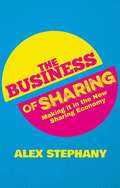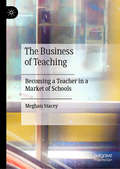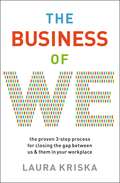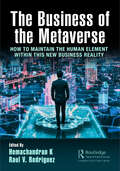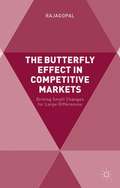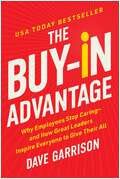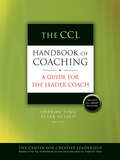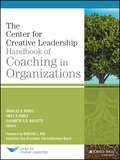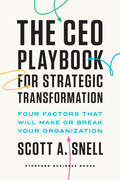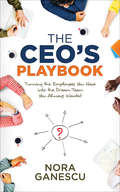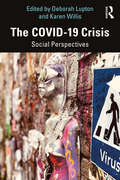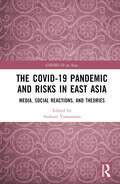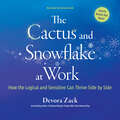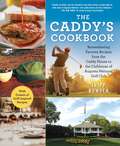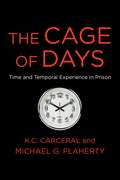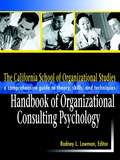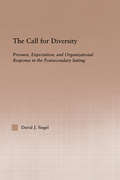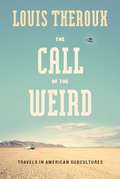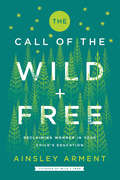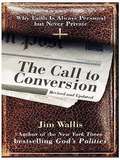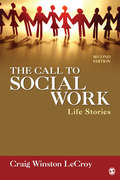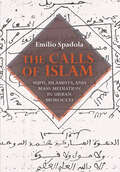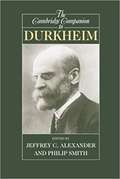- Table View
- List View
The Business of Sharing
by Alex StephanyProviding a colorful insight into the people at the forefront of the emergent Sharing Economy, a movement predicted to already be worth around $26B a year, this book gives vital advice to anyone thinking of starting or investing in a collaborative consumption business. The first of its kind, written by an author on the forefront of this new trend.
The Business of Teaching: Becoming a Teacher in a Market of Schools
by Meghan StaceyThis book explores the experiences of early career teachers in a profession that has become highly stratified by market processes. The author presents New South Wales, Australia as a case study: a state with a long history of academically selective and private sector schooling, which has become increasingly segregated under a series of neoliberalised policy reforms since the 1980s. The experiences of teachers in this book are rich and varied, from a variety of different contexts – ranging from public schools enrolling students experiencing significant educational disadvantage to elite independent schools serving much more advantaged student cohorts. Highlighting teachers’ experiences in themselves rather than their impact on students, this timely book will be of interest and value to scholars of sociology of education, teachers’ work and education policy.
The Business of We: The Proven Three-Step Process for Closing the Gap Between Us and Them in Your Workplace
by Laura KriskaDiverse teams add tremendous value to any organization… if they work as a cohesive unit. Empower your leaders to bring together teams made up of members from different cultures, age groups, and socio-economic backgrounds.In today&’s workplace, cross-cultural collaboration is essential to the survival of any business. Unfortunately, bringing together people from a variety of backgrounds can lead to &“us vs. them" misunderstandings and clashes that work against the goals of the company. Too often, well-intentioned consultants and HR representatives attempt to solve these problems with a band-aid approach to situations that warrant comprehensive solutions. Diversity in virtually every U.S. organization has increased over the past twenty years, yet the closest we have come to a workplace best practices guide is online diversity training courses or methods of coaching &“problem&” executives to be more sensitive. Neither of these avenues leads to meaningful change. Kriska teaches leaders in any organization how to prevent &“us vs. them" culture clashes by promoting inclusion in their organization to increase employee retention and productivity and to prevent misunderstandings that lead to lost time and increased legal risk.
The Business of the Metaverse: How to Maintain the Human Element Within this New Business Reality
by Raul V. Rodriguez K. HemachandranThe metaverse is the future of business applications and models, and this ground-breaking book points and details a complete and clear picture of how the metaverse can impact the various business segments and how the human element will be maintained within the evolutionary change. This book serves as a guide for those planning to implement and expand the metaverse in their business as well as those already using it on limited levels. Simulated intelligence innovation can reveal intricate and significant examples in robust and information-rich situations that posture difficulties for human insight. In addition, similar to other burgeoning advancements, the experience and aptitudes accumulated by vendors and consumers, alongside the steady analysis of interactions and information, empower metaverse calculations to be refined and improved. This book illustrates the current advancements and results and expands the analysis of human-centric metaverse applications to business segments and their future effects on overall enterprise management. Essentially, this book elaborates on the impact of the metaverse across business sectors through the use of case studies.
The Business of the Supreme Court: A Study in the Federal Judicial System
by James M. LandisAs Felix Frankfurter and James Landis write in their preface to The Business of the Supreme Court, "To an extraordinary degree legal thinking dominates the United States. Every act of government, every law passed by Congress, every treaty ratified by the Senate, every executive order issued by the President is tested by legal considerations and may be subjected to the hazards of litigation. Other Nations, too, have a written Constitution. But no other country in the world leaves to the judiciary the powers which it exercises over us." This classic volume, first published in 1928, originated in a series of articles written by Frankfurter, then a professor of law at Harvard University, and his student, Landis, for the Harvard Law Review. These articles chronicled and analyzed the many judiciary acts that were passed between 1789 and 1925, and illuminated the intimate connection between form and substance in the life of American law. For instance: When a community first decided to enact zoning laws--the Supreme Court had to approve. When the United States made a treaty with Germany following World War I--the Supreme Court had to define the limits and meaning of the treaty.Newly reissued with an introduction by constitutional expert Richard G. Stevens, The Business of the Supreme Court is still as fresh and relevant today as it was when first published. It is a work that will aid the student of the law to both love the law and remain true to its purposes.
The Butterfly Effect in Competitive Markets
by RajagopalThis book provides an introduction to the concept of entrepreneurship and entrepreneurial business management. It covers many elements of the entrepreneurial management discipline including choosing a business, organizing, financing, marketing, developing an offering that the market will value, and growing the business in all its dimensions.
The Buy-In Advantage: Why Employees Stop Caring — and How Great Leaders Inspire Everyone to Give Their All
by Dave GarrisonEmployees who buy into a company&’s purpose and goals are the key to driving sustainable bottom-line improvements. Here&’s how to get lots of them.Most leaders would love to get their people to do more than just show up and do only what&’s asked. They want employees who also bring their best talents, ideas, and enthusiasm to accomplish what&’s truly important to the organization. Unfortunately, most leaders have never been shown how to create a culture of genuine and sustainable buy-in. As a result, they miss out on the amazing advantages that widespread buy-in can deliver, including easier hiring, lower turnover, smarter strategies, and more consistent execution. Dave Garrison is renowned for helping companies foster a culture of high engagement, even in the face of adversity or rapid expansion. In The Buy-In Advantage, he now offers a practical playbook that will help leaders in any industry or any size company get much better at: Recruiting and retaining the right talent. Tapping the collective genius of their people. Prioritizing the few things that really count, which prevents burnout. Solving problems without drama. And much more. By sharing true stories from companies he&’s led as a CEO and advised as a strategist, Garrison shows how to implement these strategies without significant cost, extra effort, or disruption to core activities. His approach leads to immediate improvements as well as long-term cultural change. The result is a powerful guide to building teams that get things done, care about outcomes, and solve problems on their own initiative.
The CCL Handbook of Coaching
by Sharon Ting Peter SciscoCoaching is vital to developing talent in organizations, and it is an essential capability of effective leaders. The CCL Handbook of Coaching is based on a philosophy of leadership development that the Center for Creative Leadership has honed over thirty years with rigorous research and with long, rich experience in the practice of leadership coaching. The book uses a coaching framework to give a compass to leaders who are called to coach as a means of building sustainability and boosting performance in their organizations. The book explores the special considerations that leader coaches need to account for when coaching across differences and in special circumstances, describes advanced coaching techniques, and examines the systemic issues that arise when coaching moves from a one-to-one relationship to a developmental culture that embraces entire organizations.
The CCL Handbook of Coaching in Organizations
by Douglas Riddle Elizabeth C.D. Gullette Emily R. HooleEffect better outcomes with a robust coaching program The CCL Handbook of Coaching in Organizations deals withthe practical, ethical, and political challenges of coaching withinan organization. From coaching superiors to coaching businessteams, this book outlines the Center for Creative Leadership (CCL)approach to professional coaching to help readers better manageleadership development and talent management program outcomes. Withexpert guidance on the key functions of human resources, learningand development, and organizational development, readers will gaininsight into the issues associated with coaching programimplementation and management, and the use of internal versusexternal coaches. Coverage includes a wide range of coaching-basedservices used in most large organizations, with practical advice oncreating the right programs for maximum impact within the availablebudget.Professional development is a hot topic and plays a key role inattracting and retaining the best talent. Coaching is a broad areawithin the field, encompassing a range of services and goals, withvaried expectations and requirements. This book provides actionableguidance for those designing, initiating, and implementing coachingprograms, with new approaches and techniques that drive betteroutcomes.Provide direct coaching within an organizationManage coaching systems and programsInitiate and lead mentoring and peer-coaching programsManage external coaches, and deal effectively with coachingsuppliersAn ideal coaching program must balance need with budget and betailored to the requirements and resources of both the organizationand the participants. It's a complex undertaking, but the rightstrategy and planning can lead to even better than expectedoutcomes. For the human resources professional who wants tostrengthen an organization's coaching program, CCL Handbook ofCoaching in Organizations is a thoughtful reference for aspecialized function.
The CEO Playbook for Strategic Transformation: Four Factors That Will Make or Break Your Organization
by Scott A. SnellThere is no CEO task more significant than leading change in an organization whose old business model needs updating. Large-scale change involves rethinking how to engage customers, partners and suppliers with new technology and hard decisions about how to reorganize internal operations—plus the challenges of executing the transformation. The stakes are high, filled with risk and reward obvious to all...and it often fails. Why? Most organizations aren't built for change—they're designed for stability, scale, and repetition. Too many things can go wrong, from natural organizational resistance and inertia, to lack of strategic focus, to execution problems. And yet, organizations today must be more dynamic than ever before. Strategy is dynamic, not static, and requires agility, nimbleness, rapid resource deployment, and organizational change. This practical playbook helps CEOs and other key leaders reduce the risks and see through the overwhelming complexity of a major change in organizational strategy. Unlike many other books on leading change that focus narrowly on overcoming resistance, The CEO Playbook for Strategic Transformation offers a comprehensive framework involving 4 major tasks for leaders: 1) Establish and Communicate the Urgent Need; 2) Engage Stakeholders; 3) Mobilize the Organization; and 4) Develop Organizational Agility. Leaders who guide their organizations through these stages are far more likely to succeed than those who lack a playbook. Professor Scott Snell shares insights based on years of experience working with organizations undergoing change. He also provides a set of self-assessments, frameworks for action, and interventions to help senior leaders succeed at their most challenging and important task.
The CEO’s Playbook: Turning the Employees You Have into the Dream Team You Always Wanted
by Nora GanescuMany business leaders love their work and their company, but don’t know what else to do to get their employees to love it, too. Their employees may be good people; however, leaders who want their team to become brilliant together are facing roadblocks. In The CEO’s Playbook, Nora Ganescu shows businesses how to become that exciting and innovative workplace that creates one game-changing success after the other. She also understands the importance of key elements such as dedication, passion, and joy at work and teaches leaders how to instill these qualities within their employees. If running your company feels more like pushing a huge boulder up the mountain, then you are not alone. The CEO’s Playbook can help.
The COVID-19 Crisis: Social Perspectives
by Deborah LuptonSince its emergence in early 2020, the COVID-19 crisis has affected every part of the world. Well beyond its health effects, the pandemic has wrought major changes in people’s everyday lives as they confront restrictions imposed by physical distancing and consequences such as loss of work, working or learning from home and reduced contact with family and friends. This edited collection covers a diverse range of experiences, practices and representations across international contexts and cultures (UK, Europe, North America, South Africa, Australia and New Zealand). Together, these contributions offer a rich account of COVID society. They provide snapshots of what life was like for people in a variety of situations and locations living through the first months of the novel coronavirus crisis, including discussion not only of health-related experiences but also the impact on family, work, social life and leisure activities. The socio-material dimensions of quotidian practices are highlighted: death rituals, dating apps, online musical performances, fitness and exercise practices, the role of windows, healthcare work, parenting children learning at home, moving in public space as a blind person and many more diverse topics are explored. In doing so, the authors surface the feelings of strangeness and challenges to norms of practice that were part of many people’s experiences, highlighting the profound affective responses that accompanied the disruption to usual cultural forms of sociality and ritual in the wake of the COVID outbreak and restrictions on movement. The authors show how social relationships and social institutions were suspended, re-invented or transformed while social differences were brought to the fore. At the macro level, the book includes localised and comparative analyses of political, health system and policy responses to the pandemic, and highlights the differences in representations and experiences of very different social groups, including people with disabilities, LGBTQI people, Dutch Muslim parents, healthcare workers in France and Australia, young adults living in northern Italy, performing artists and their audiences, exercisers in Australia and New Zealand, the Latin cultures of Spain and Italy, Asian-Americans and older people in Australia. This volume will appeal to undergraduates and postgraduates in sociology, cultural and media studies, medical humanities, anthropology, political science and cultural geography.
The COVID-19 Pandemic and Risks in East Asia: Media, Social Reactions, and Theories (COVID-19 in Asia)
by Nobuto YamamotoUsing "risk" as a conceptual lens, this book analyzes how communities across East Asia responded to the disruption unleashed by the COVID-19 pandemic. The contributors to this book look at how governments, societies, and individuals have perceived, experienced, dealt with and interpreted the pandemic and the transformations it has brought across countries like Japan, South Korea, Taiwan, Vietnam, and the Philippines. They examine pressing concerns such as infodemic, digital health literacy, media cynicism, telework, and digital inequalities in conjunction with issues such as public trust, identity formation, nationalism, and social fragmentation. They look at a wide range of questions relating to communication, mediation, and reactions to the challenges of the pandemic. An insightful resource for scholars of risk studies and of East Asian societies, the book is also a valuable reference for students and researchers of media and communication studies and sociology.
The Cactus and Snowflake at Work: How the Logical and the Sensitive Can Thrive Side by Side
by Devora ZackThis hilarious and profound workplace guide proves the rigorously rational and the supremely sympathetic can meet in the middle and merge their strengths. Readers will discover how blending with their opposite opens the pathway to being their truest selves.Carl Jung's personality typology introduced the distinction that Feelers (who lead with their hearts) put more weight on personal concerns and the people involved, and Thinkers (who lead with their heads) are guided by objective principles and impartial facts. This book calls them Cacti and Snowflakes—each singularly transcendent. But can people with such fundamentally different ways of making sense of and engaging with the world work together?Yes, says Devora Zack! The key is not to try to change each other. Zack says we can directly control only three things: what we say, what we think, and what we do. The best use of our energy is to focus on our own reactions and perceptions rather than try to “fix” other people. This book includes an assessment so readers can learn where they are on the Thinker/Feeler spectrum—and because it's a spectrum, readers might well be a snowcactus or a cactusflake. Then Zack helps them figure out where other people might be, guiding them through a myriad of modes of communication and motivation based on personality type. She includes real-life scenarios that show how to nurture one's nature while successfully connecting with those on the other side.As always, Zack fearlessly and entertainingly dispels myths, squashes stereotypes, and transforms perceived liabilities into strengths. And she once again affirms that, like chocolate and peanut butter, we are better together.
The Caddy's Cookbook: Remembering Favorite Recipes from the Caddy House to the Clubhouse of Augusta National Golf Club
by Tripp BowdenForty Delicious Recipes Inspired by the Links at Augusta! As a caddy at Augusta National Golf Club, Tripp Bowden learned many invaluable lessons about golf, life—and food. In The Caddy’s Cookbook, Bowden shares forty of his favorite recipes inspired by his life spent behind-the-scenes at Augusta. Complete with intrinsic, full-color photos, this book—certainly not standard by any cookbook terms—features surprising spins on table-friendly classics, such as Honey Baked Ham butter beans, caddy house gumbo, collard greens and pot liquor, deep fried pork chop sandwiches, New England clam chowder, lobster bisque, Clubhouse ice cream, toasted pound cake (also known as Mr. Roberts's Dessert), and Bowden's favorite beverage from the nineteenth hole. Along the way, Bowden contextualizes how and when he enjoyed some of these unexpected culinary delights as he details his unique caddy experiences and the lifelong friendships forged through food and golf. In doing so, he creates a real treat for golf lovers and food enthusiasts alike, with elements of unscripted humor reminiscent of the classic Caddyshack sprinkled and dashed throughout!
The Cage of Days: Time and Temporal Experience in Prison
by Michael G. Flaherty K. C. CarceralPrisons operate according to the clockwork logic of our criminal justice system: we punish people by making them “serve” time. The Cage of Days combines the perspectives of K. C. Carceral, a formerly incarcerated convict criminologist, and Michael G. Flaherty, a sociologist who studies temporal experience. Drawing from Carceral’s field notes, his interviews with fellow inmates, and convict memoirs, this book reveals what time does to prisoners and what prisoners do to time.Carceral and Flaherty consider the connection between the subjective dimensions of time and the existential circumstances of imprisonment. Convicts find that their experience of time has become deeply distorted by the rhythm and routines of prison and by how authorities ensure that an inmate’s time is under their control. They become obsessed with the passage of time and preoccupied with regaining temporal autonomy, creating elaborate strategies for modifying their perception of time. To escape the feeling that their lives lack forward momentum, prisoners devise distinctive ways to mark the passage of time, but these tactics can backfire by intensifying their awareness of temporality. Providing rich and nuanced analysis grounded in the distinctive voices of diverse prisoners, The Cage of Days examines how prisons regulate time and how prisoners resist the temporal regime.
The California School of Organizational Studies Handbook of Organizational Consulting Psychology
by Rodney L. Lowman California School of Organizational Studies at Alliant International UniversityDiscover a wealth of issues in the field of consulting psychology with this landmark book. Explore key topics in assessment and evaluation, building teams, executive coaching, career counseling, interpersonal conflicts and relationships, benefit design, personality testing, and much more. Learn to delineate and better understand the wide array of information you are faced with, and become more adept and knowledgeable in the field of consulting psychology. This comprehensive volume has expert contributors recruited by the volume's editor--himself an eminent educator and practitioner in the field. You will get: Special issues in consulting to specific types of organizations including industry, schools, government, non-profit, and international Informative guidelines for professional practice procedures Organized sections on individual, group and organizational issues And much more!
The Call For Diversity: Pressure, Expectation, and Organizational Response in the Postsecondary Setting (RoutledgeFalmer Studies in Higher Education)
by David J. SiegelThis book explores the organizational responses of professional schools and colleges to pressures, demands, requirements, expectations, and incentives related to diversity. The macro-organizational perspective supplies much-needed balance and complexity to traditional depictions of post-secondary institutions as largely self-motivated in their diversity efforts.
The Call of the Weird: Travels in American Subcultures
by Louis TherouxNo, it doesnOCOt get any weirder than this: Thor Templar, Lord Commander of the Earth Protectorate, who claims to have killed ten aliens. Or April, the Neo-Nazi bringing up her twin daughters Lamb and Lynx (A. K. A. Prussian Blue, a white-power folk group for kids) and her youngest daughter, Dresden. For a decade, Louis Theroux has been making acclaimed television programs about offbeat characters on the fringes of U. S. society. Now he revisits the people who have intrigued him the most to try to discover what motivates them-and why they hold their bizarre beliefs. Reflecting on these assorted dreamers, schemers, and outlaws, Theroux entertainingly and unforgettably creates ?a moving, funny, and frightening expos(r) of America and its often elusive dreamOCO ("NATIONAL GEOGRAPHIC"). "
The Call of the Wild and Free: Reclaiming Wonder in Your Child's Education (Wild and Free)
by Ainsley ArmentAllow your children to experience the adventure, freedom, and wonder of childhood with this practical guide that provides all the information, inspiration, and advice you need for creating a modern, quality homeschool education.Inspired by the spirit of Henry David Thoreau—”All good things are wild and free”—mother of five Ainsley Arment founded Wild + Free. This growing online community of mothers and families want their children to receive a quality education at home by challenging their intellectual abilities and nurturing their sense of curiosity, joy and awe—the essence of a positive childhood. The homeschool approach of past generations is gone—including the stigma of socially awkward kids, conservative clothes, and a classroom setting replicated in the home. The Wild + Free movement is focused on a love of nature, reading great books, pursuing interests and hobbies, making the entire world a classroom, and prolonging the wonder of childhood, an appealing philosophy that is unpacked in the pages of this bookThe Call of the Wild and Free offers advice, information, and positive encouragement for parents considering homeschooling, those currently in the trenches looking for inspiration, as well as parents, educators, and caregivers who want supplementary resources to enhance their kids’ traditional educations.
The Call to Conversion: Why Faith Is Always Personal But Never Private
by Jim WallisThe author of the "New York Times" bestseller "God's Politics" says the only hope for the nation's soul is a conversion to the values Jesus preached and a government policy that reflects those values.
The Call to Social Work: Life Stories
by Craig Winston LeCroyThe Call to Social Work, Second Edition is a presentation of narrative descriptions about the work and life of a wide variety of contemporary social workers. The book provides an in-depth understanding of why people choose social work, how they garner meaning from their work, and what they struggle with as they provide needed services. Additionally, it presents more information about the everyday practice of social work, both the challenges and the joys. Instructors who use this book in their courses will be able to contrast their ideals of practice with the realities captured in each life story, while students who read the book will be able to think about whether each story represents good practice, or what principles they would adhere to based on their understanding of social work.
The Calls of Islam: Sufis, Islamists, and Mass Mediation in Urban Morocco (Public Cultures of the Middle East and North Africa)
by Emilio Spadola“A theoretically sophisticated reading of the mediation of social and spiritual relationships in Fez.” —Gregory Starrett, University of North Carolina at CharlotteThe sacred calls that summon believers are the focus of this study of religion and power in Fez, Morocco. Focusing on how dissemination of the call through mass media has transformed understandings of piety and authority, Emilio Spadola details the new importance of once-marginal Sufi practices such as spirit trance and exorcism for ordinary believers, the state, and Islamist movements. The Calls of Islam offers new ethnographic perspectives on ritual, performance, and media in the Muslim world.“A superb demonstration of anthropological analysis at its best. A major contribution to our understanding of the complicated nexus of religion, nationalism, and technology.” —Charles Hirschkind, author of The Feeling of History“An instructive contribution to the literature on Morocco’s socio-cultural and political idiosyncrasies.” —Review of Middle East Studies“Spadola’s dense but short study . . . manages admirably well to deal with a complex topic, skillfully balancing ethnographic and analytic elements.” —American Ethnologist“[The] tension between social classes is subtly drawn out throughout this exemplary book, and Spadola also does a magnificent job tying local, national, and transnational contexts together. Although writing about a very specific place and time, he manages to capture post-millennial anxieties about Islam and belonging that are far reaching in their scope.” —Contemporary Islam“Spadola’s book is theoretically sophisticated, skillfully constructed, and rich in detail.” —Journal of Religion
The Cambridge Companion to Comparative Law
by Mauro Bussani Ugo MatteiWe can only claim to understand another legal system when we know the context surrounding the positive law in which lawyers are trained. To avoid ethnocentricity and superficiality, we must go beyond judicial decisions, doctrinal writings and the black-letter law of codes and statutes and probe the 'deeper structures' where law meets cultural, political, socio-economic factors. It is only when we acquire such awareness and knowledge of the critical factors affecting both the backgrounds and implications of rules that it becomes possible to control the present and possibly future developments of the world's legal institutions. This collection of essays aims to provide the reader with a fundamental understanding of the dynamic relationship between the law and its cultural, political and socio-economic context.
The Cambridge Companion to Durkheim
by Philip Smith Jeffrey C. AlexanderLong recognised as a foundational figure in the development of social scientific thought, Emile Durkheim's work has been the subject of intense debate over the years. This authoritative and comprehensive collection of essays re-examines the impact of Durkheim's thought, considering the historical contexts of his work as well as evaluating his ideas in relation to current issues and controversies. Eminent authorities in the field have contributed to this up-to-date overview, giving the reader - both students and academics - a chance to engage directly with leading figures in the field about contemporary trends, ideas and dilemmas. This volume reflects the cross-disciplinary application of Durkheim's theories and will interest scholars of anthropology, political science, cultural studies and philosophy, as well as sociology. This is a landmark volume that redefines the relevance of Durkheim to the human sciences in the twenty-first century.
